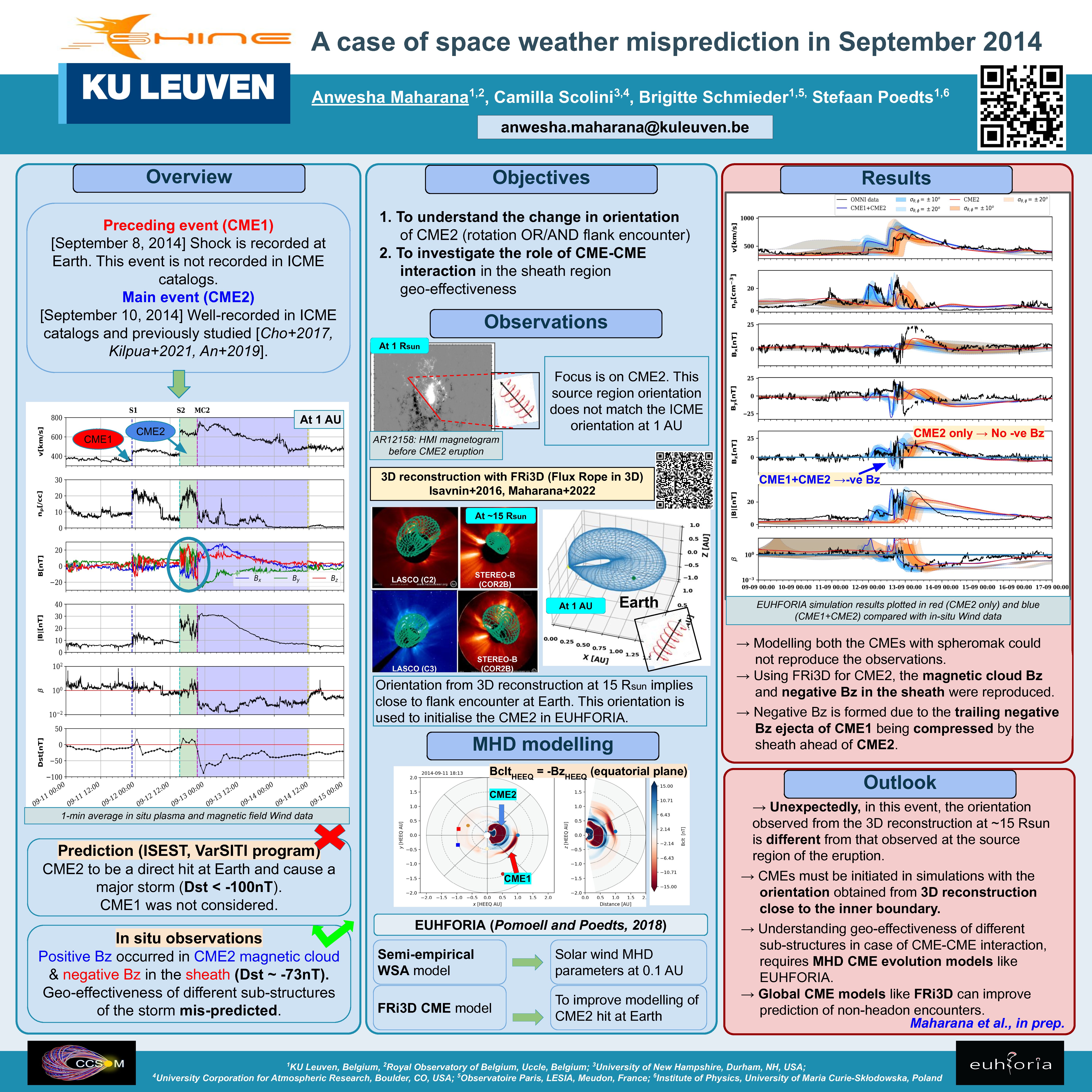Authors: Anwesha Maharana (KU Leuven, Leuven, Belgium; Royal Observatory of Belgium, Belgium), Camilla Scolini (University of New Hampshire, Durham, NH, USA; University Corporation for Atmospheric Research, Boulder, CO, USA), Brigitte Schmieder (KU Leuven, Leuven, Belgium; Observatoire Paris, LESIA, Meudon, France), Stefaan Poedts (KU Leuven, Leuven, Belgium; Institute of Physics, University of Maria Curie-Skłodowska, Lublin, Poland)
Coronal Mass Ejections (CMEs) are large-scale magnetized plasma structures that propagate through the heliosphere and induce geomagnetic storms. By the virtue of this large-scale geometry, the CME flanks can sometimes be geoeffective even when the CME apex/nose might not be. In addition, while propagating through the heliosphere, CMEs undergo interaction with other CMEs and with the structures in the solar wind, like high-speed streams and stream interaction regions. If not properly accounted for, the above two factors can give rise to the misprediction of CME magnetic fields and in turn its geo-effectiveness. In this work, we study the CME event of September 10, 2014 (CME2, hereafter) that was predicted to cause a major storm. However, the presence and effect of a preceding CME that erupted on September 8, 2014 (CME1, hereafter) were not considered in the space weather forecasting of CME2. Unexpectedly, the ejecta resulted in positive Bz but a geoeffective sheath was developed during the evolution and the interaction in the heliosphere that resulted in a minimum Dst ~ -100 nT at Earth. Hence, the geoeffectiveness of the various sub-structures involved in this event was mispredicted.
We model the background 3D solar wind with the EUropean Heliosphere FORecasting Information Asset (EUHFORIA), onto which the flux rope CMEs are launched and evolved until reaching Earth. To investigate the miscalculation of CME2’s magnetic field configuration at Earth, we employ the global flux rope CME model, FRi3D (Isavnin, 2016), that has been recently implemented in EUHFORIA (Maharana et al., 2022). In this work, we aim to reproduce the observed plasma and magnetic field properties, especially the negative Bz component in the sheath and the positive Bz of the ejecta at Earth. We address the possible factors and processes responsible for the development of geoeffectiveness in this event.


